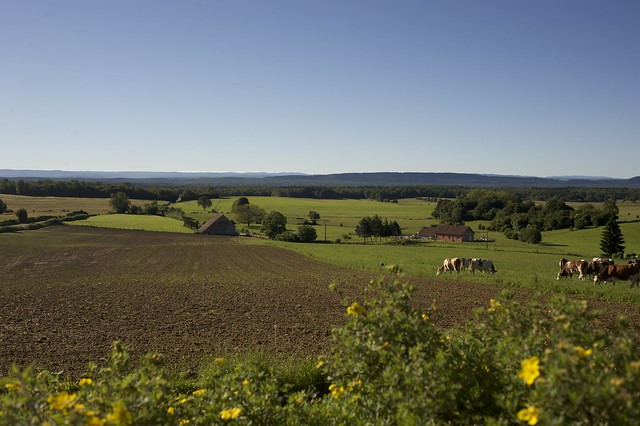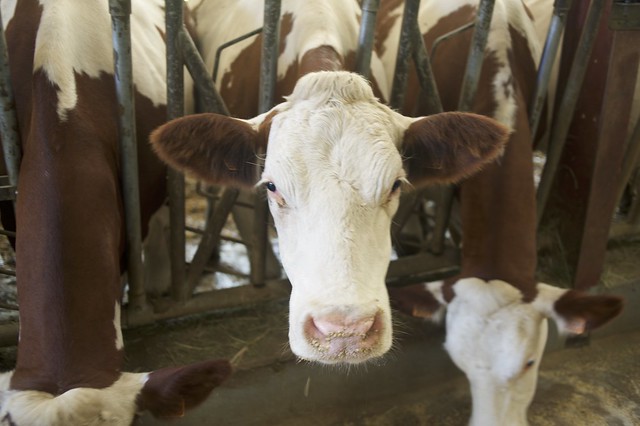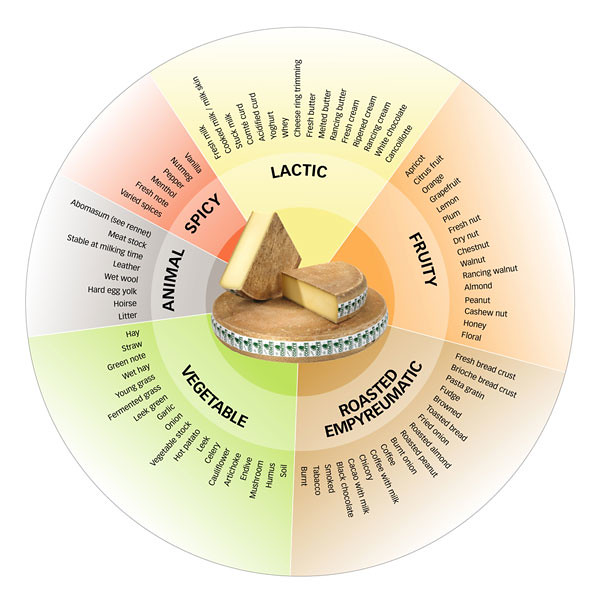Chief aim of my Voyage de Fromage (aside from eating lots of yummy cheese while checking out a part of France I’d not been to previously … oh and drinking gorgeous local wines) was discovering what sets Comté apart from the many other wonderful cheeses of France.
Comté has been produced in the Jura Mountains of Eastern France for more than 1,000 years. In and of itself, old-timey cheesemaking isn’t all that unique anywhere in Europe. But what’s particularly special (and so very French as well) about Comté is that all these hundreds of years it’s been made by cooperatives. If it’s not from a member dairy farmer member of the collective, it ain’t Comté.
That’s just one aspect that distinguishes Comté from other cheeses. Milk for the cheese can be from two breeds of cattle only – Montbéliarde and French Simmental cows (or cross breeds of the two). The vast majority (about 95%) of the milk used for Comté is from Montbéliarde. Cows milked for Comté must have a hectare of pastureland each. When not grazing, cows are fed fresh, natural feed with no silage.
Milk must be transported to a fruitiére where it’s turned into cheese. The milk must be sent there immediately after milking, and a fruitiére cannot be more than 16 miles away from the farm. Renneting must occur within a stipulated time after milking, according to the storage temperature of the milk. Only raw milk is used to make the cheese. Salt is applied directly to the surface of the cheese.
There are bunches of more specifications, some of them really technical and scientific. But basically the next step is simply to let the cheese be. All Comté is aged for a minimum of four months. The average is eight months. And the extra super yummy stuff (in my opinion anyway) is allowed to mature for at least a year to 18 months.
And that of course leads me to the most important aspect about this cheese: how it tastes. More than 80 flavours are discernible in Comté. These flavours can be grouped into six aromatic families: milk, fruit, roasted, plant, animal, and spice.
Comté has a nice give when you bite into it and melts really well too. It goes especially well with wines from the Jura and with off-dry sherries.
Comté pairs perfectly with hams as well, and is a prime ingredient for a croque monsieur. While in the Jura, I came across Morteau, a gorgeous traditional smoked sausage from essentially the same region as Comté. I was sure to bring some back home with me. As you might have guessed, it tastes great with Comté. Even before my trip, I found that Comté was an ideal cheese to serve with hazelnuts. See my recipe for hazelnut mac ‘n cheese here:
tikichris.com/2016/04/23/recipe-hazelnut-comte-mac-n-cheese
Be sure to check back here soon for more highlights from my Voyage de Fromage.


























2 Responses to Voyage de Fromage: Discovering the Comté Difference